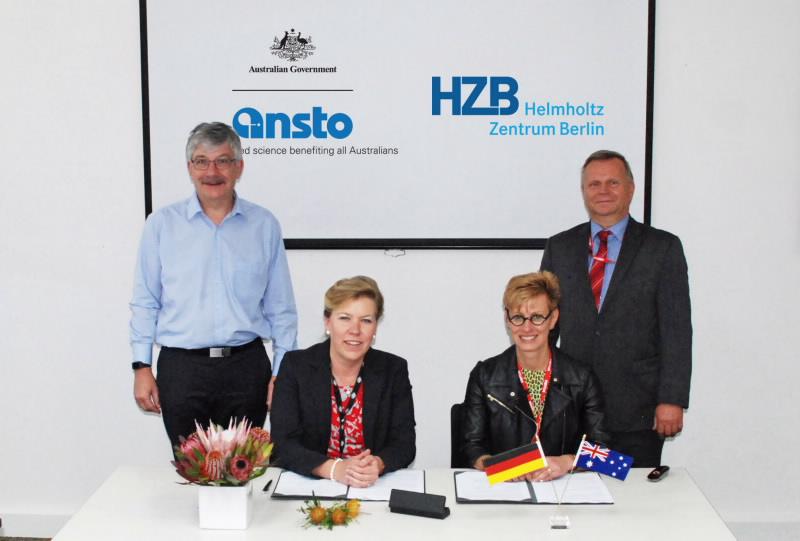

Published on the 18th October 2016 by ANSTO Staff
Australian scientists and researchers will see their capabilities expanded and global collaboration enhanced, thanks to a renewed agreement with a German research giant.
 |
| (Left to right) ANSTO CEO Adi Paterson, Group Executive Nuclear Science and Technology and Landmark Infrastucture Simone Richter, HZB Scientific Director Prof Anke Kaysser-Pyzalla and HZB Executive Director of Finance and Administration Thomas Frederking |
The Australian Nuclear Science and Technology Organisation (ANSTO) yesterday renewed its Memorandum of Understanding with the German research facility Helmholtz-Zentrum Berlin (HZB).
Like ANSTO, HZB operates a research reactor and a synchrotron, which are both used to provide insights into the structure of materials and processes within complex systems.
The HZB research portfolio includes solar cells, solar fuels, thermoelectric technologies, and the materials with which new, energy-efficient information technologies such as spintronics can be constructed.
Some 3,000 scientists use the HZB facilities each year, and the organisation specialises in research for energy materials, energy research, and development of accelerators.
Simone Richter, Group Executive, Nuclear Science and Technology and Landmark infrastructure at ANSTO, signed the agreement on behalf of ANSTO.
“ANSTO, and Australia more broadly, has made significant investment in key nuclear science infrastructure which provides benefits to health, the environment, industry, and more,” she said.
“This MOU will help enable reciprocal exchange of resources and cooperation across our organisations, to advance professional experiences and to carry out cooperative research projects.
“It will also open doors for faculty members, researchers and students to move between the facilities, advancing their important work with the combined value of both organisations.
“This combined capacity is expected to be a powerful alignment at a time when it has never been more important to answer important scientific questions, particularly relating to energy.”
Part of the arrangement has also included the transfer of a neutron beam instrument from the Berlin reactor to ANSTO. The instrument can be used to investigate soft matter and study solid-liquid interfaces, such as lipid membranes.
The new instrument will be named Spatz (sparrow in German), in ANSTO’s tradition of naming neutron scattering instruments at the Australian Centre for Neutron Scattering after wildlife.
A small delegation from HZB also toured the facilities at Lucas Heights and met with scientific leaders following the signing of the agreement.